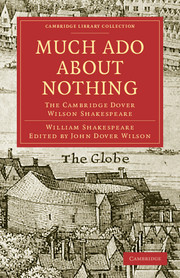TO THE READER
Published online by Cambridge University Press: 07 September 2010
Summary
The following is a brief description of the punctuation and other typographical devices employed in the text, which have been more fully explained in the Note on Punctuation and the Textual Introduction to be found in The Tempest volume:
An obelisk(†) implies corruption or emendation, and suggests a reference to the Notes.
A single bracket at the beginning of a speech signifies an ‘aside.’
Round brackets are taken from the original, and mark a significant change of voice; when the original brackets seem to imply little more than the drop in tone accompanying parenthesis, they are conveyed by commas or dashes.
In plays for which both Folio and Quarto texts exist, passages taken from the text not selected as the basis for the present edition will be enclosed within square brackets. Square brackets preceded by an obelisk denote lines which Shakespeare apparently intended to delete, though they got into print through inadvertence.
Single inverted commas (‘ ’) are editorial; double ones (“ ”) derive from the original, where they are used to draw attention to maxims, quotations, etc.
The reference number for the first line is given at the head of each page. Numerals in square brackets are placed at the beginning of the traditional acts and scenes.
- Type
- Chapter
- Information
- Much Ado about NothingThe Cambridge Dover Wilson Shakespeare, pp. xxxiii - xxxivPublisher: Cambridge University PressPrint publication year: 2009First published in: 1923

